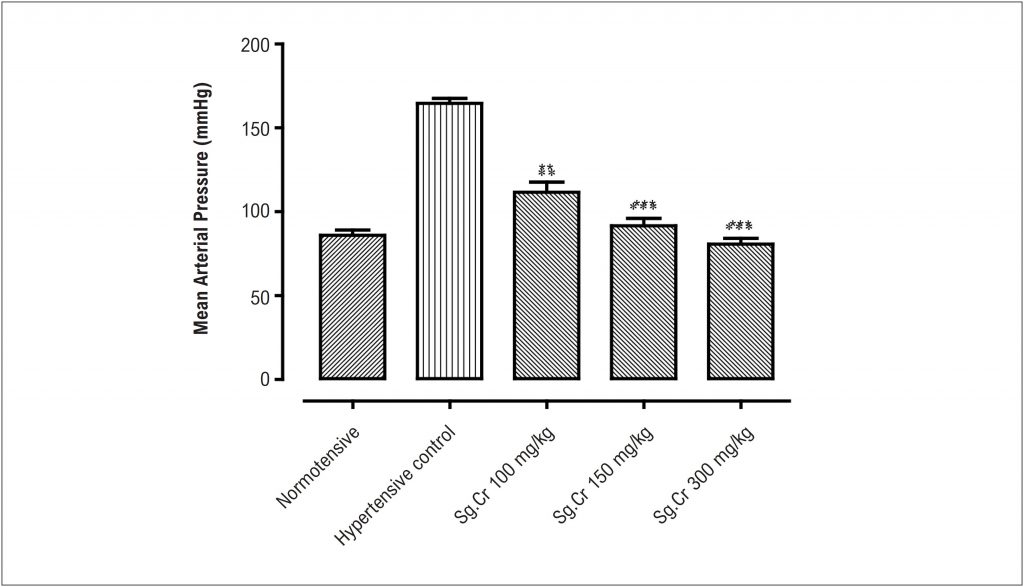Arq. Bras. Cardiol. 2021; 117(6): 1093-1103
Antihypertensive Activity of Sauromatum guttatum Mediated by Vasorelaxation and Myocardial Depressant Effects
This Original Article is referred by the Short Editorial "Searching Naturally Occurring Compounds to Treat Hypertension".
Abstract
Background:
Sauromatum guttatum (S. guttatum) is used in the treatment of blood disorders and reportedly has a spasmolytic activity through Ca2+ channel inhibition.
Objectives:
The aim of this study was to investigate the antihypertensive potential of S. guttatum in high salt-induced hypertensive Sprague-Dawley (SD) rat model (HSHRs).
Methods:
SD rats were divided into normotensive, hypertensive, S. guttatum and verapamil treated groups. S. guttatum crude extract (Sg.Cr) (100, 150 and 300 mg/kg/day) and verapamil (5, 10 and 15 mg/kg/day) were administered orally along with NaCl. Aortic rings and right atrial strips from normotensive rats were used to investigate the underlying mechanisms. The level of statistical significance was set at 5%.
Results:
Mean arterial pressure decreased in the Sg.Cr and verapamil-treated hypertensive groups in a dose-dependent manner (p < 0.001). In the vascular reactivity study, acetylcholine induced relaxations with an EC50 value of 0.6 µg/mL (0.3–1.0) in Sg.Cr-treated hypertensive rats (300 mg/kg), suggesting endothelial preservation. In isolated normotensive rat aorta, Sg.Cr-treated rats showed vasorelaxation with an EC50 value of 0.15 mg/mL (0.10-0.20), ablated by endothelial denudation or pretreatment with L-NAME and atropine. Sg.Cr treatment caused relaxation against high K+-induced contractions, like verapamil. Sg.Cr showed negative inotropic (82%) and chronotropic effects (56%) in isolated rat atrial preparations reduced with atropine. The phytochemical investigation indicated presence of alkaloids, flavonoids and tannins.
Conclusion:
S. guttatum has a vasodilatory effect through endothelial function preservation, muscarinic receptor-mediated NO release and Ca2+ movement inhibition, while atrial myocardial depressant effect can be linked to the muscarinic receptor. These findings provide pharmacological base for using S. guttatum extract as an antihypertensive medication.
983

